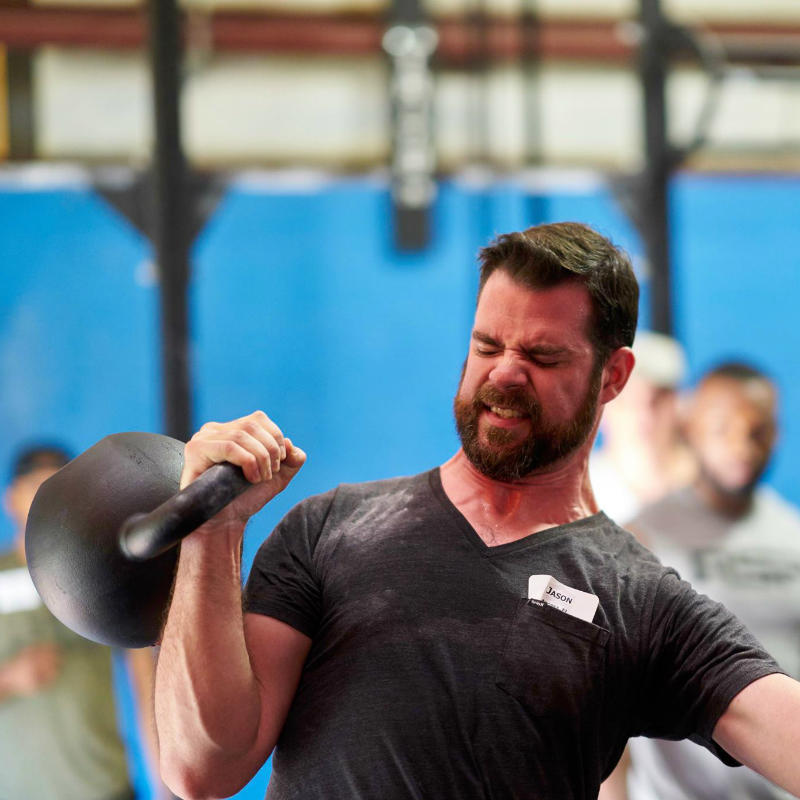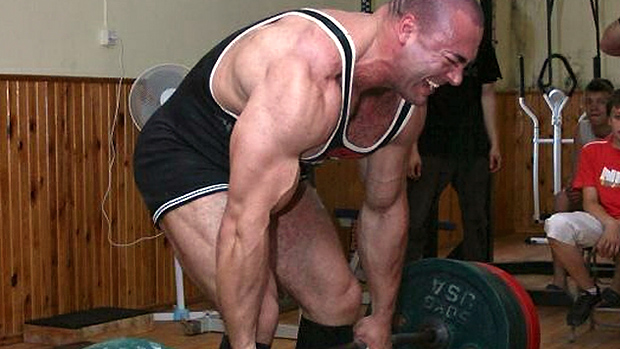David Mary
Level 5 Valued Member
Tried them. Didn't like them. Two handed kettlebell swings with 30% of the weight give me all the go without banging me up. Glad they float your boat though.
Rif wrote something like this a ways backI'm not sure if Pavel or anyone on StrongFirst has really written about DE/CAT style training. @Steve Freides , can you think of anyone or any article?

Rif wrote something like this a ways back

A Program to Train for the Half-Bodyweight Kettlebell Press | StrongFirst
This program is for getting you to a half-bodyweight kettlebell press, but will work just as well for getting you to the next bell size, whatever that is.www.strongfirst.com
Touch and go definitely has it place in deadlift training - or at least if someone pull sumo.
Not if you keep your taint open, lower the weight with control and only use the legs to press up.Touch and Go Sumo Deadlift minutely are effective for Sumo Deadlifts. They allow greater Top End Loading; where Sumo Deadlifter are traditionally the strongest
Slow Eccentriclower the weight with control and only use the legs to press up.
think about it like a wide stance standing leg press ...or super wide box squat with bar in the hands

Slow Eccentric
...and"Leg Pressing" the weight back up would be effective.
Paul Oneid
Oneid provide some good information.
Much of the information he presents is what I advocate.
Sumo "Leg Press" Deadlift
The initial drive off the floor with a Sumo Deadlift amounts to "A Wide Stance Deadlift"; information on that has been previously posted.
Powerlifting Deadlifts: Breaking The Weight Off The Floor
McLaughlin Biomechanical Research determined...
1) Sumo Deadlifts
The Muscle Firing Sequence with the Sumo is Legs > Back.
The Leg initiate beaking the bar off the floor.
Essentially, "Leg Pressing" it off the floor.
2) Powerlifting Conventional Deadlift
McLauglin's Biomechanical Analysis determined the Muscle Firing Sequences with the majority of Powerlifting Conventional Deadlifters is Back> Legs> Back.
The Back initiates breaking the weight off the floor with some assistance from the Legs.
Then the loading shifts to the Legs.
With Back performing work to finish it.
3) Olympic Lift Conventional Deadlifts
This is completely different from a Powerlifting Conventional Deadlifts.
The Olympic Lift Conventional Deadlift utilized "Leg Drive" to break the bar off the floor.
Cueing for Olympic Lift Conventional Dealift is to "Leg Press" the bar off the floor...
or...
"Push the Platform" away from you.
The Olympic Lift Deadlifts enables a Weightlifter to correctly position the bar at the knees for the Second Pull.
The Powerlfiting Conventional vs Olympic Conventional Deadlifts Issue
The Dogma of the Olympic Conventional "Lift with the Legs" is touted by many for everyone; which is not true for Powerlifting Conventional Deadlifters.
For many Powerliftering Conventional Deadlifters performing an Olympic Conventional Deadlift at a competition usually in Competition usually ensure they Deadlift less than the could/should.
McLaughlin's Biomechanical Research
Regarding The Powerlfiting Conventional Deadlift...
Contrary to popular opinion, the initial drive is done primarily by the back (erector spinae) and not the legs. If the athlete tries to move the weight using their legs instead of their back the result is a premature straightening of the legs and an unwanted curvature of the back.
McLaughlin compared the deadlift styles of top powerlifters at the time such as Jon Kuc, Bill Kazmaier, and Vince Anello. His results showed that all the lifters had similar styles exhibiting back extension at the beginning of the lift.
Another component is...
Thoracic Back Rounding for the Powerlifting Conventional Deadlifters
This usually allows them to pull more than an Olympic Lift Conventioal Deadlift. However, Thoracic is counter productivce for Olympic Lifters and Sumo Deadlifters.
Dr Bret Contreras, along with others researchers, demonstrated the Thoracic Upper Back Rounding is not an issue.
Thoracic Rounding allow the lifter to maintain the bar closer to the Body Center of Gravity, COG. This minimizes the Torque Loading on the Back. The farther away the bar is form the Lifter's COG, the greater the Torque; meaning the Bar Load is magnified beyond the weight on the bar.
A Strong Case for Round Back Deadlifts

A Strong Case For the Rounded Back Deadlift
Always pull with a neutral spine. Well, maybe not always. Info here.www.t-nation.com
The Rounded Back Conundrum
Many lifters find that when the weight creeps over 90% of their 1RM, their back starts to round, and the rounding gets more pronounced as the load approaches true maximal weight. I'm one of these individuals. I wish I could pull heavy loads with a neutral spine, but unfortunately I'm unable to do so.
With what's deemed "perfect form," characterized by maintenance of the natural lordotic and thoracic spinal curvature with the extension revolving around the hip joints, I'm able to pull 425 pounds. If I allow my back to round considerably, I can pull 565 pounds.
Bob Peoples round back deadlifted over 700 pounds.
